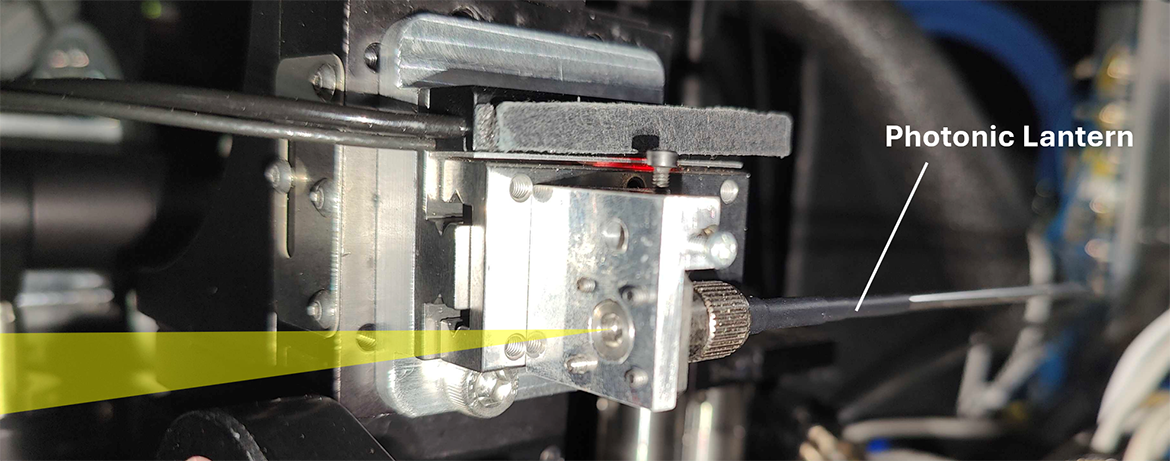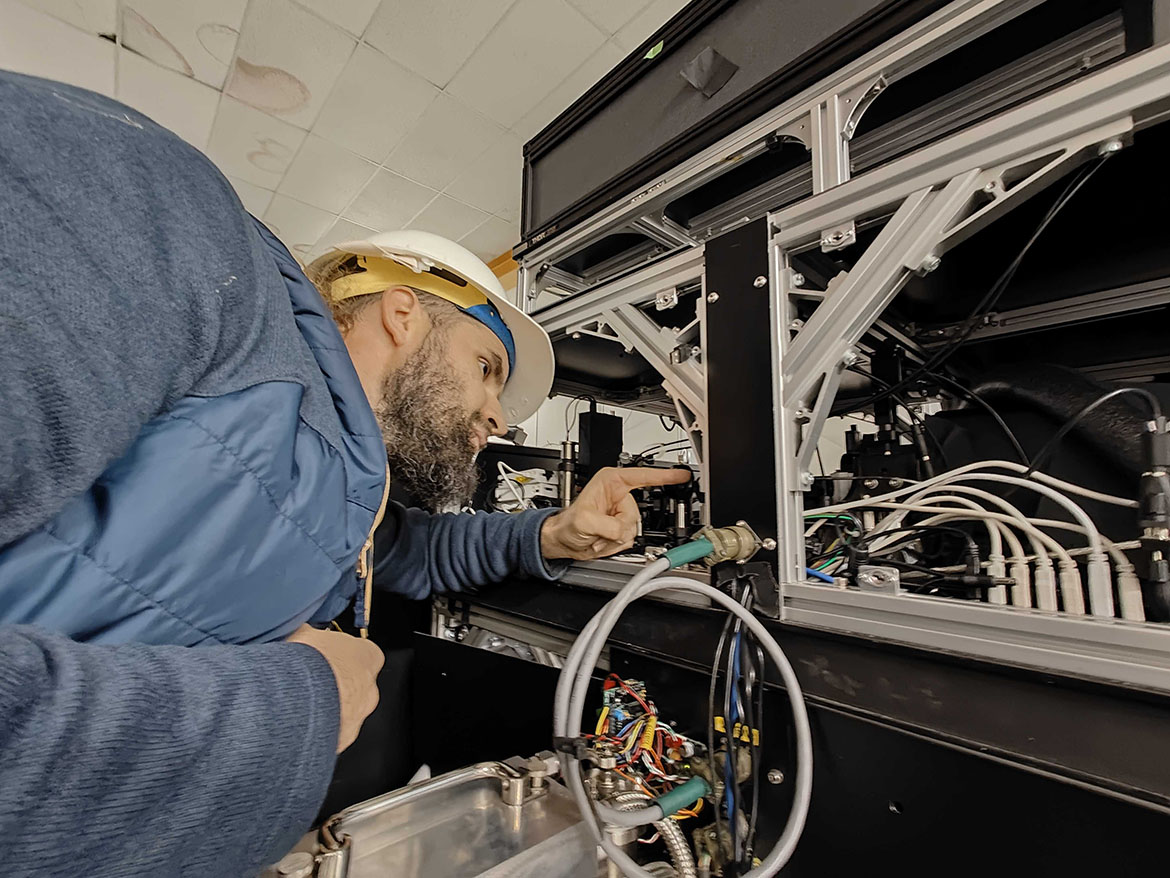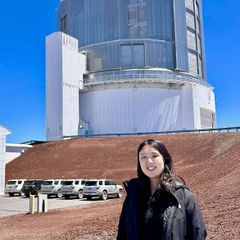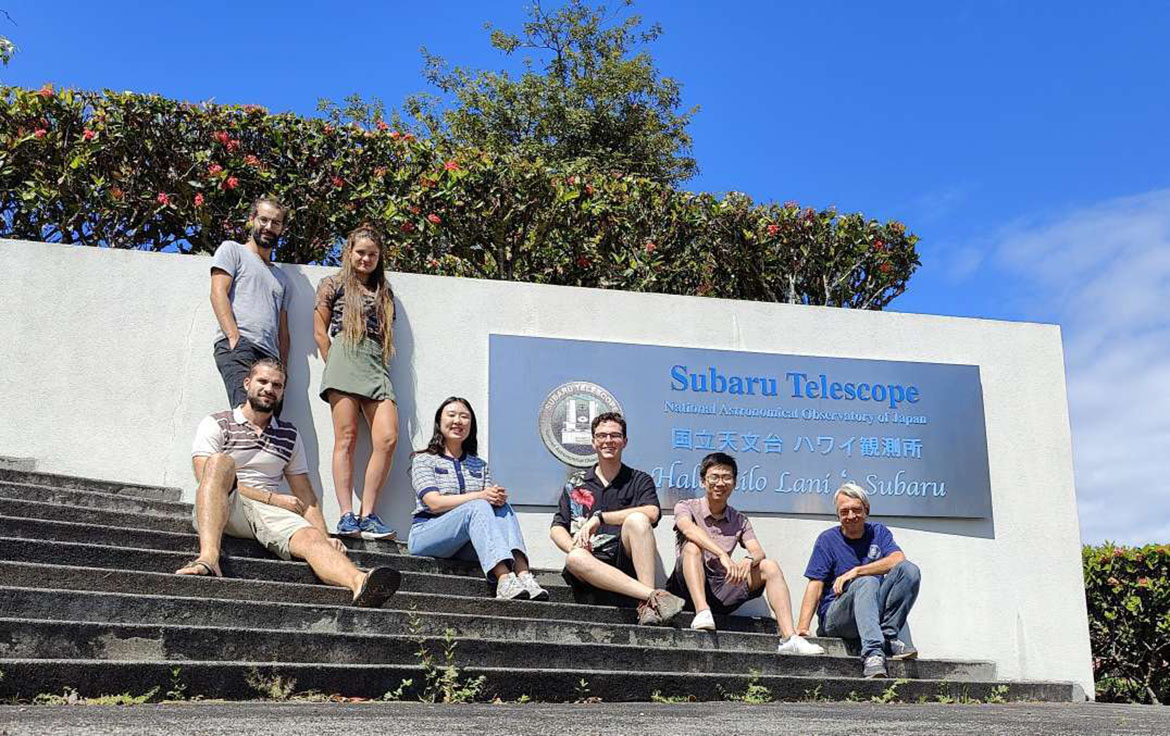Key takeaways
- The ability to get detailed views of distant objects in space is limited by the telescope size, so the sharpest details are usually obtained by linking telescopes together. A UCLA-led team of astronomers has used a device called a photonic lantern on a single telescope to get the most detailed view yet of star beta Canis Minoris.
- The photonic lantern splits light collected by the telescope into multiple channels based on spatial "mode," then computational techniques are used to reconstruct a high-resolution image from the photonic lantern outputs.
- The new approach to imaging will allow astronomers and astrophysicists to view objects that are smaller and more distant than ever before, unlocking answers to some mysteries.
A novel imaging technique used for the first time on a ground-based telescope has helped a UCLA-led team of astronomers to achieve the sharpest-ever measurement of a star's surrounding disk, revealing previously unseen structure. The breakthrough opens a new way for astronomers to study fine details of a wide variety of astronomical objects and opens the door to new discoveries about the universe.
The ability to view fine details of astronomical objects depends on the size of the telescope. As a telescope's viewing aperture gets bigger, it collects more light to reveal fainter objects, and its images can also become sharper. The sharpest details are obtained by linking telescopes together into arrays. Building larger telescopes or linking them into arrays has been critical to obtain the high-resolution images needed to discover new details at the finest scales visible in the sky.
With the new photonic lantern, it is possible to make better use of the light collected by a telescope to achieve a high resolution. Details of the achievement are published in the journal Astrophysical Journal Letters.
"In astronomy, the sharpest image details are usually obtained by linking telescopes together. But we did it with a single telescope by feeding its light into a specially designed optical fiber, called a photonic lantern. This device splits the starlight according to its patterns of fluctuation, keeping subtle details that are otherwise lost. By reassembling the measurements of the outputs, we could reconstruct a very high-resolution image of a disk around a nearby star," said first author and UCLA doctoral candidate Yoo Jung Kim.

The light collected by the telescope is split by the photonic lantern into multiple channels based on the shape of the wavefront — like separating a chord into its individual musical notes — and then further split by color, like a rainbow. The photonic lantern itself was designed and fabricated by the University of Sydney and the University of Central Florida, and is part of the new instrument FIRST-PL developed and led by the Paris Observatory and the University of Hawaiʻi. This instrument is integrated on the Subaru Coronagraphic Extreme Adaptive Optics instrument at the Subaru Telescope in Hawaiʻi, operated by the National Astronomical Observatory of Japan.
"What excites me most is that this instrument blends cutting-edge photonics with the precision engineering done here in Hawaiʻi," said Sebastien Vievard, a faculty member in the Space Science and Engineering Initiative at the University of Hawaiʻi who helped lead the build. "It shows how collaboration across the world, and across disciplines, can literally change the way we see the cosmos."

The approach, splitting light into its different components, enables a novel imaging technique that can achieve finer resolution than traditional imaging methods.
"For any telescope of a given size, the wave nature of light limits the fineness of the detail that you can observe with traditional imaging cameras. This is called the diffraction limit, and our team has been working to use a photonic lantern to advance what is achievable at this frontier," said UCLA professor of physics and astronomy Michael Fitzgerald.
"This work demonstrates the potential of photonic technologies to enable new kinds of measurement in astronomy," said Nemanja Jovanovic, a co-leader of the study at the California Institute of Technology. "We are just getting started. The possibilities are truly exciting."
During the application of this new method, scientists were, at first, hampered by turbulence in the Earth's atmosphere. The effect, which is similar to how the horizon sometimes appears wavy or watery on a hot summer day, causes objects viewed through the telescope to fluctuate and wiggle. To correct for these effects, the team at the Subaru Telescope used adaptive optics, which continuously cancel out the turbulence effects to stabilize the light waves in real time. Out of necessity, researchers went one step further, striving for clarity.

"We need a very stable environment to measure and recover spatial information using this fiber," said Kim. "Even with adaptive optics, the photonic lantern was so sensitive to the wavefront fluctuations that I had to develop a new data processing technique to filter out the remaining atmospheric turbulence."
The team used the photonic lantern-equipped Subaru Telescope to observe a star called beta Canis Minoris (β CMi). This star, located in the constellation Canis Minor, is about 162 light-years from Earth and has a surrounding disc that consists of hydrogen. The disc rotates so quickly around the star that the gas moving toward us glows bluer, while the gas moving away appears redder. This is due to the Doppler effect, which describes phenomena like the higher pitch of an approaching car and the lower pitch of a receding car. This color shift causes the apparent position of the system's light to move slightly with wavelength.
By applying new computational techniques, the team measured these color-dependent image shifts with about five times greater precision than was previously possible. Beyond confirming the disc's rotation, they discovered that the disc is lopsided.
"We were not expecting to detect an asymmetry like this, and it will be a task for the astrophysicists modeling these systems to explain its presence," said Kim.
The new approach to imaging will allow astronomers and astrophysicists to view details of objects that are smaller and more distant than ever before, unlocking answers to some mysteries, and, as in the case of the lopsided disc around β CMi, lead to new mysteries that need to be solved.

The international effort included researchers from the Space Science and Engineering Initiative group at the University of Hawaiʻi, the National Astronomical Observatory of Japan, the California Institute of Technology, the University of Arizona, the Astrobiology Center in Japan, the Paris Observatory, the University of Central Florida, the University of Sydney, and the University of California Santa Cruz.






